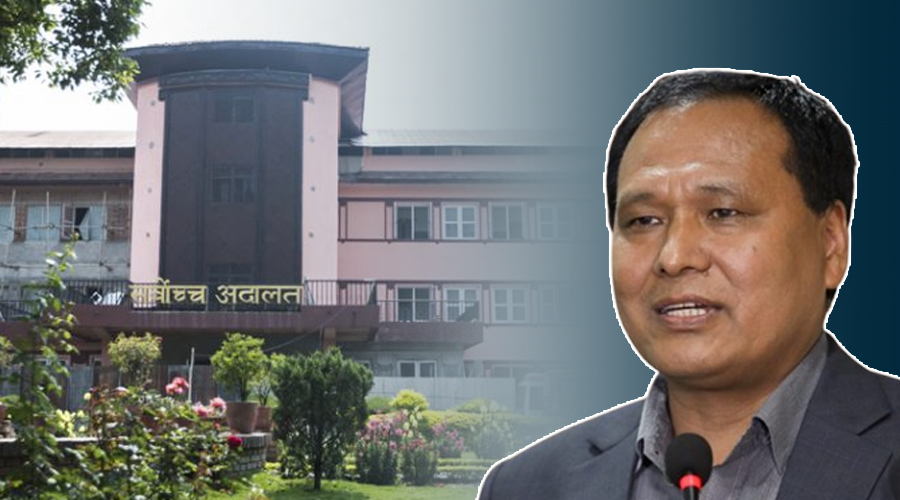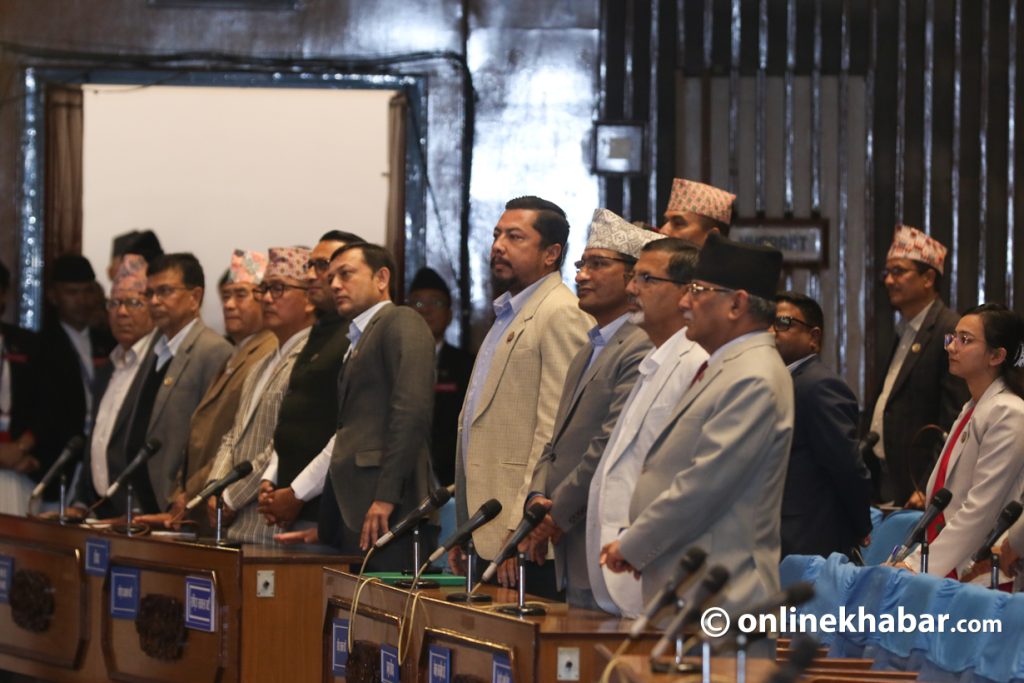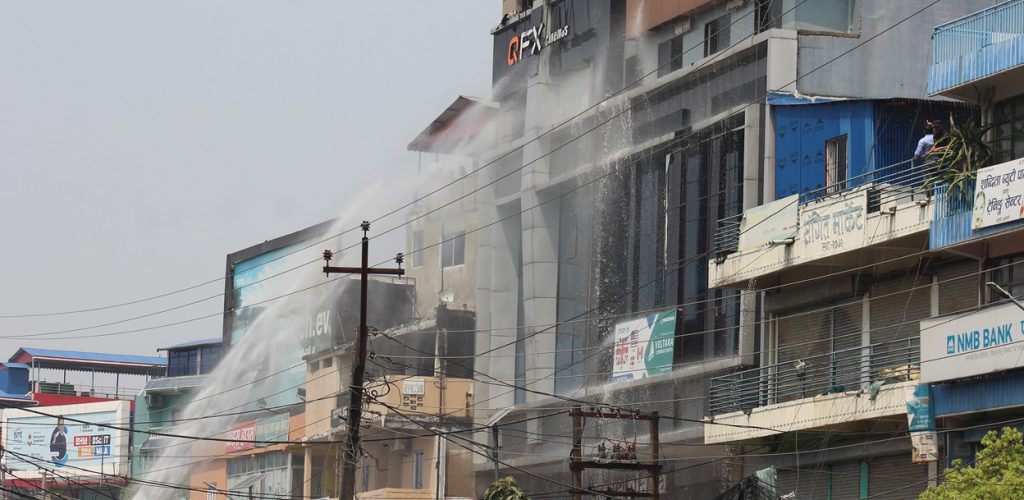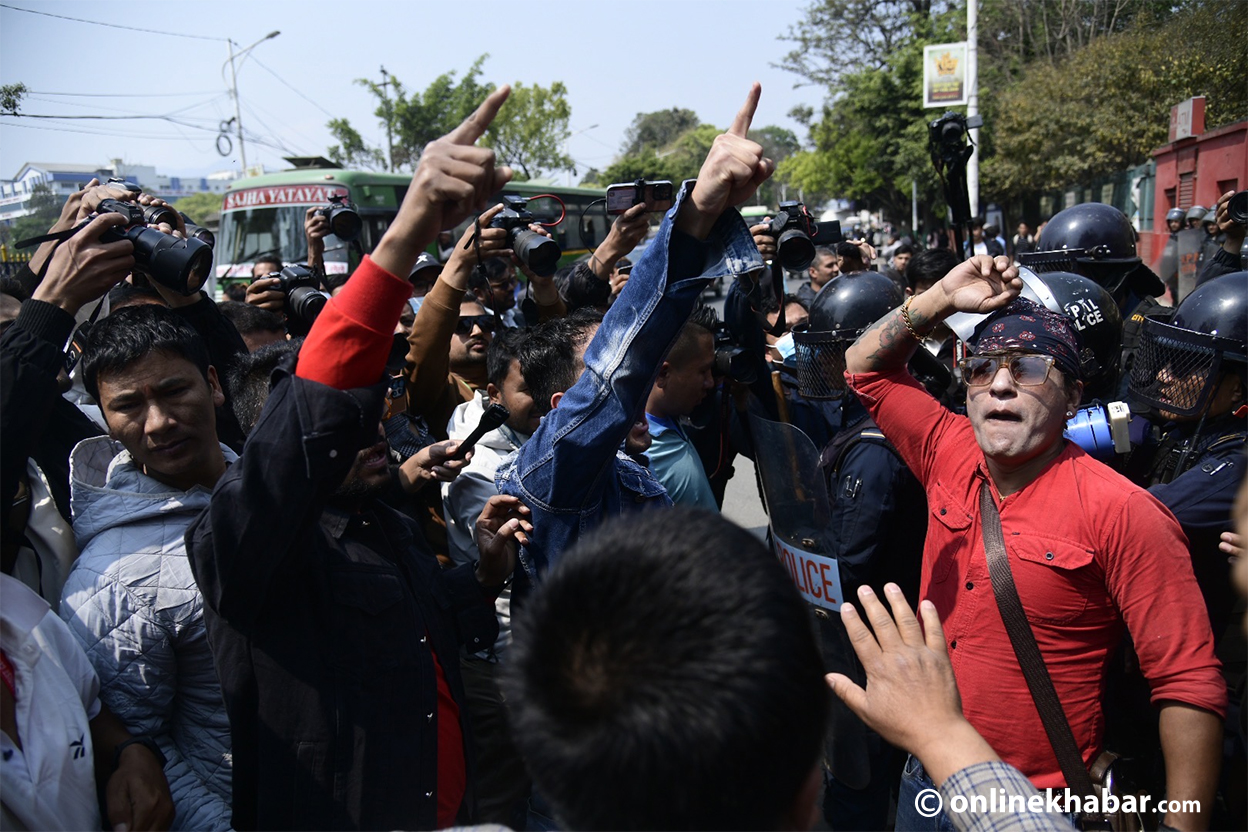
What was meant to be a grand celebration of Pokhara Visit Year 2025 turned into a terrifying ordeal when a hydrogen-filled balloon explosion left Deputy Prime Minister and Finance Minister Bishnu Prasad Paudel and Pokhara Metropolitan City Mayor Dhanraj Acharya injured.
The incident, which took place on February 15, during a public event attended by high-profile officials and citizens, has sparked serious debates about safety measures in public gatherings and the need for stricter regulations.
The festive atmosphere of the Pokhara Visit Year 2025 inauguration took a disastrous turn when a series of balloons suddenly exploded. Witnesses describe a loud blast followed by chaos and panic as event attendees scrambled for safety. The injured officials were immediately rushed for medical attention, while authorities launched an investigation into the cause of the explosion.
What went wrong?
Initial reports suggest that hydrogen-filled balloons caught fire when they came into contact with an ignition source. Hydrogen, a highly combustible gas, was reportedly used instead of helium due to its lower cost. A spark from an electrical switch near the balloon cluster is believed to have triggered the explosion, turning what was supposed to be a visual spectacle into a safety disaster.
This tragic incident raises crucial questions: Why was a flammable gas like hydrogen used in a public event? Were there proper safety protocols in place? And most importantly, could this have been avoided?
Experts argue that cost-cutting measures often lead to unsafe decisions. The choice to use hydrogen instead of helium, despite its known risks, was a critical mistake. Moreover, the lack of a thorough risk assessment and the failure to enforce basic fire safety regulations significantly contributed to the explosion.
The occupational safety perspective
Occupational safety is not just about industrial workplaces—it applies to public events too. This incident is a glaring example of negligence in risk management. The absence of proper fire safety measures, trained personnel, and emergency preparedness at such a high-profile event is alarming.
Had standard safety procedures been followed, this explosion could have been prevented. This highlights the urgent need for Nepal to adopt and enforce stricter occupational safety guidelines, particularly for public events where large crowds gather.
The Center for Environment Safeguards and Occupational Safety (CESOS) at Kathmandu University has proposed key recommendations to prevent such disasters in the future:
- Ban the use of flammable gases in public events: Hydrogen should be strictly prohibited in public gatherings, with helium or other safer alternatives mandated.
- Strict safety regulations: All event organisers must undergo fire safety training, and their safety plans should be approved by regulatory bodies before execution.
- Comprehensive risk assessments: Authorities should implement mandatory risk assessments for large events to identify potential hazards in advance.
- Public awareness campaigns: Educating the public and event organizers on fire safety risks and best practices should be prioritised.
- Stronger accountability measures: Organisers who fail to comply with safety standards should face strict legal consequences.
The Pokhara balloon explosion is more than just an unfortunate accident—it is a wake-up call for Nepal to prioritise occupational safety in public events.
This incident should serve as a turning point, pushing authorities to implement necessary regulations to prevent future disasters. Nepal Government should remain committed to advocating for safety reforms and ensuring that public events in Nepal uphold the highest safety standards.
The lives and well-being of the people must come first—before cost-cutting measures and negligence lead to yet another preventable tragedy.






















